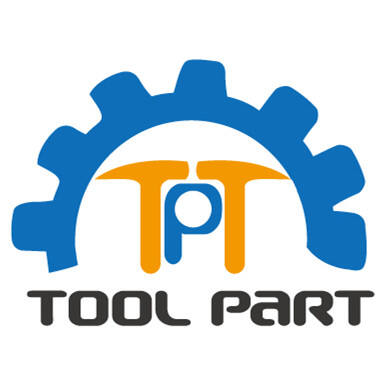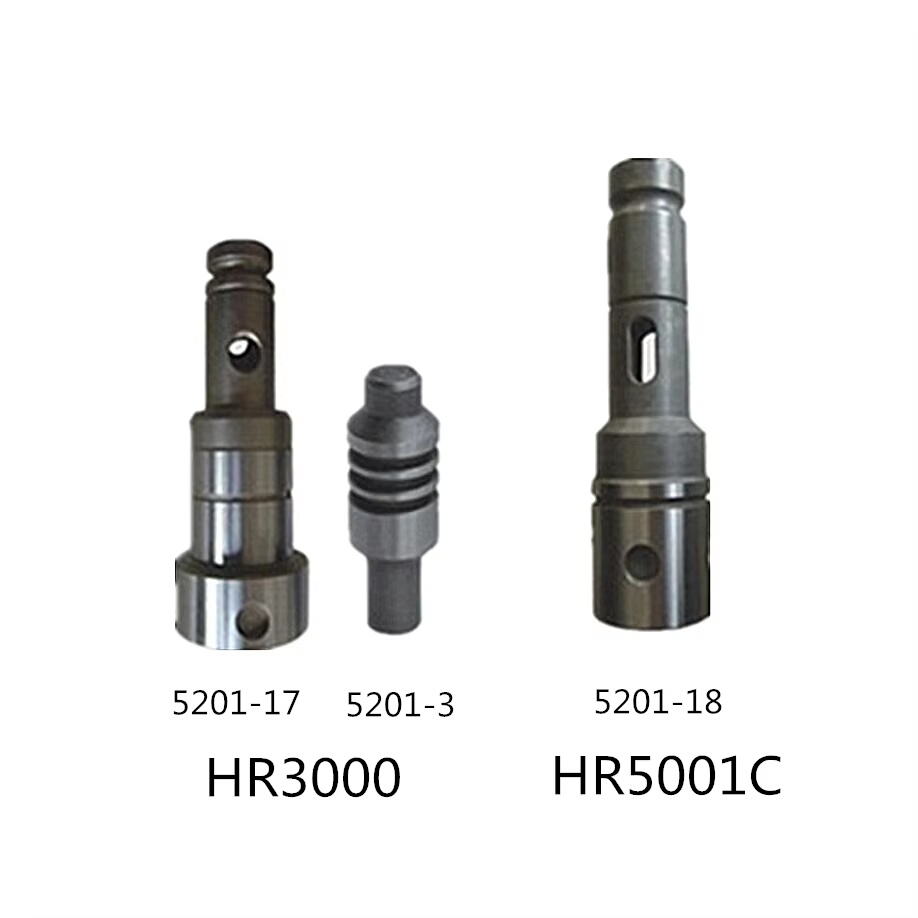Zašto je održavanje držača alata kritično za dužinu života
Održavanje držača alata je neophodno za duži život preciznih instrumenta. Pravilno održavanje čuva držač alata u dobroj kondiciji i olakšava preciznu obradu, takođe smanjuje vreme prebacivanja držača alata što smanjuje štetu prilikom upotrebe. Redovna provera i briga o našim držačima alata smanjuje aspekte štete alatu i minimizuje male probleme koji bi mogli da se razviju u značajne probleme, čime se sprečava potreba za novim držačem i smanjuju se troškovi. Međutim, svi ti procesi uklanjanja materijala takođe iznose alat — a briga o držačima alata podrazumeva više nego samo čuvanje da mašinske alate rade glatko; ona direktno utiče na kvalitet i tačnost onoga što gradimo.
Redovna održavanja alatke takođe sprečava poluđanje opreme, čime se smanjuje neaktivno vreme mašine i povećava proizvodnja. Bez obzira na to, industrijske prakse za osnovno održavanje i provere (čišćenje, inspekcija i mastila) mogu im pomoci da pronađu potencijalne probleme. Ovaj postupak osigurava prekidljiviju i stabilniju radnju, a time se povećava opšta efikasnost proizvodnje. Smanjuje se neaktivno vreme - Niko ne može da se dopusti neočekivanom isključivanju, a finansijska gubitka ugovora često su još gore.
To je finansijski neumreno praksa, jer može biti skupo da ih napravite za popravke ili zamene. Izvršavanje redovne maintenancе držača alata sprečava situacije u kojima suzuđeni kršaji uzrokuju hitnu zamenu novih delova ili skuplje popravke delova. Ovi neočekivani troškovi mogu imati veliki uticaj na budžet, dok je ’maintenanca’, koja je preventivna, moguće predvideti i obično je manje skupa. Kao rezultat, radionica koja uloži vreme i resurse kako bi efikasno i učinkovito održavala držače alata na redovnom osnovu može biti dobro na putu prema dugom životu tih investicija rada—and dugog života koji može pomoci kompaniji da ostane u plu.
Korak po korak vodič kroz čišćenje držača alatki
Uklanjanje smeća i ostataka hlađajuće tekućine
Čišćenje držača alata je vrlo važno za idealni rad i dug život. Počnite tako što ćete ukloniti držač alata sa mašine. Uverite se da ga proverite na prisutnost zaključanih čipova ili šteta, jer su ti često uzroci koji mogu uticati na vožnju. Mičite fragmente mekom i pažljivim škrupanjem, uz paznju da ne oštećete površine. To je izuzetno važno, jer može doći do nagomilavanja smrljiva što bi uticalo na pravilan prilagodba i funkciju držača alata. Za teže mrlje hlađenja, koristite tepih umaćen u razvojnike za potpuno čišće bez bilo kakvih šteta.
Izbor efikasnih sredstava za čišćenje
Izbor odgovarajućih čišćalica za držače alata je takođe vrlo važan za izbegavanje štete i dugotrajnu upotrebu. Izaberite čišćalice koje su specijalno izrađene za metalne delove, jer će raspastati ulje bez napada na površine. Tipične opcije su izopropilski alkohol i industrijske čišćalice. Uvek provjerite da su razvojnički sastojci kompatibilni sa svojstvima materijala držača alata kako biste spriječili neželjenu koroziju ili oštećenje.
Protokoli sušenja posle čišćenja
Ispravno sušenje držača alata je ključno za izbegavanje ržave i drugih problema uzrokovanih vlažnošću. Dozvolite da se svi delovi dobro prosuše na otvorenom ili lagano prosušite delove sa kompresovanim vazduhom, ali budite pažljivi da ne uđete vlažnina u teško dostupne oblasti. To takođe osigurava da voda ili čišćivači ne ostaju zaključani i uzrokuju koroziju ili štete. I čuvajte držače alata u suhom mestu, što će ih zadržati nepošađenim i spremnim za sledeću upotrebu, a i u dobroj kondiciji za vašu sledeću radnu aktivnost.
Najbolje prakse mašnjenja za glatku radnju
Izbor industrijskih standardnih mašnjava
Izbor mašnja je važan za trajnost i performanse držača alatki. Mašnjenje: industrijski standardizovani mašnji namenjeni visokobrzi obradi su ključni za smanjenje iznosenja kao i topla. Možda biste trebali odabrati sintetične mašnje, koje obično pružaju bolje performanse u ekstremnim uslovima i u širokom opsegu temperature. Redovna upotreba proizvođačevih smernica će olakšati korišćenje preporučenih mašnja i sprečiti hemijske sukobe koji bi mogli uticati na rad držača alatki.
Frekvencija primene za optimalni rad
Održavanje držača alata i sprečavanje preteranog auskanja držača alata je moguće postići samo planiranjem mašnjenja. Držač alata treba da se namazuje kao redovna održavanja, u odnosu na njegov korišćenje i radne uslove. Redovne inspekcije će osigurati da imate odgovarajući nivo mašnje kako biste sprevili pregrjanje i štetu od auskanja. Najbolja praksa je dokumentovanje vašeg intervala mašnjenja kako biste mogli da pratite kako vaš držač alata funkcioniše tokom vremena i da izvršite izmene u planu ako je to potrebno. Čuvanje ovoga će omogućiti da stvari tokuju mnogo glatko i da se produži životni vek vašeg stroja.
Protokoli ispitivanja za otkrivanje auskanja i štete
Redovni protokoli inspekcije su ključni za otkrivanje auskanja i štete kod držača alata, što može povećati preciznost i produžiti njihov životni vek.
Identifikacija uzoraka korozije taperskog dela
Procenjivanje uzoraka korozije na držačima alata je važan aspekt preventivnog održavanja. Mogu da ga proverim na prisustvo ržave ili pitting-a ako ga periodično posmatram. Prateći ove uzorke korozije tokom vremena, mogu da poduzmem preventivne akcije i smanjem verovatnoću katastrofalnog poštedanja. Neocjenjive su alati poput stakla, koji otkrivaju rane indikacije problema sa taper-om koji bi inače mogli ostati skriveni. Brinuoći za ove probleme i brzo reagujući, čuvate svoje CNC držače alata u idealnom radnom stanju, što pomaže da se izbegne duži downtime mašine.
Provera mikroskopskih prsura
Tako koristim neuništavajuće teste, poput barvarenih pronikala, da otkrijem nevidljive trnove koji bi mogli nestabilizovati alat. Takođe je važno voditi računa o tačkama napona, kao što su uglovi i oznake, gde se trnovi mogu pojaviti iz naponenosti. Snimanje ovih promena može pomoći da se napravi model i predvide sledeći greškovni slučaj. Ključ je da radite na pronaći te 'mikroskopske trnove' pre nego što se više upustite u propast. To ne samo što drži moje alate u najboljem stanju za rad, već je bolje i za ukupnu sigurnost maštarske radionice.
Meriti odstupanje preciznim instrumentima
Odstopanje može se meriti pomoću točnih instrumenta (pokretanjem mašine na određenoj brzini i usporedbom tačaka pomoću indikatora) i važno je ako želite da sačuvate pravilnu poravnanost ili radite na mašinskom alatu. Koristim indikatore za merenje odstopanja, a to mi pomaže da pratim svoju religiju kada je reč o tolerancijama proizvođača. Postavljanjem prihvatljivih tolerancija i periodičnim proverama odstopanja, mogu odmah ispraviti ili zameniti delove koji uzrokuju manje od maksimalne performanse. Ovi koraci osiguravaju savršeno poravnanje alata, jedini način da se postigne izuzetni rezultat obrade i da se sprečaju netačnosti, koje bi mogli negativno uticati na kvalitet rada. Stalnim nadzorom, ispunjavam kriterije za uslugu preciznog mašinskog obradiva.
Podešena skladišna rešenja za maksimalnu zaštitu
Skladišna okruženja sa kontrolisanim klimatskim uslovima
Kontrolirano smeštanje držača alata je važan faktor u čuvanju od štetnih efekata vlažnosti i korozije. Putem regulacije okruženja, imamo mogućnost da sprečimo oksidaciju površina alata izazvanu vlagonosnošću, što uključuje skuplje nošenje i polom. Monitoriranje fluktuacija temperature osigurava da se izvrši najmanji mogući materijalni stres, činjica koja je posebne važnosti u održavanju konzistentnosti držača alata. Korišćenjem šifara koje kontroliraju vlažnost smanjuje se verovatnoća da vaši alati bivaju uticajno zasvojeni od strane okruženja, a zaštićuju ih od uslova koji bi mogli uzrokovati brže nošenje. To znači dug život i pouzdanu performansu za naše operacije obrade.
Antikorozione obrade i pokrivci
Sprajzovi ili druge protuproračne rešenja, kada se primene, mogu služiti kao proaktivni štit protiv sredina koji štete držačima alatki. Uporno je ova spoljna slojeva odbrane ključna u otporovanju šteti od vlage i drugih korozivnih agenata koji inače postoje u okruženju za čuvanje. Takođe, ove alatke trebaju da imaju zaštitne prebole kako bi se zaštitali, posebno u okruženjima sa visokom vlažnošću. Postavljanje grafika za održavanje ovih tretmana će održati njihovu učinkovitost, time zaštićujući vaše pripadnosti na dugi rok. Ove akcije ne samo što osiguravaju sigurnost instrumenata, već i maksimiziraju njihovu performansu i životnu dobu alatki.
Sigurne tehnike rukovanja za prevenciju oštećenja
Praćenje pravilnog postupka pri držanju alatki je značajno utiče na metode podizanja i transporta. Alati i procedure Ergonomije za profilisanje ozbiljnih ozljeda su ključni za sprečavanje ozbiljnih ozljeda i čuvanje opreme. Prevoz alatki sa zaključavanjem protiv sviranja sprečava moguće udarce tijekom prevoza. Također, uz uključivanje osoblja koje poznaje optimalne metode rukovanja, postaje moguće poboljšati poštivanje sigurnosnih propisa i smanjiti rizik od nesreća izazvanih nepravilnim rukovanjem.
Sprečavanje udarca tijekom montiranja je ključni faktor za održavanje integriteta alatke. Posebno, korišćenje amortizatora može smanjiti komplikacije i zaštititi ključne strukture. Također je potrebno obrazovati operatere o tačnim metodama postavljanja, što može pomoći u smanjenju rizika tijekom procesa montiranja. Dobra praksa je redovito ponovo procijenjivati i poboljšavati proces montiranja uz ispite naučene iz prethodnih primjena kako bi se održao integritet alatki.
Dobar red na radnom mestu je takođe važan deo u prevenciji neželjenog štetovanja. Čista i uredna radna površina sprečava slučajno srušavanje alatki sa stola na pod ili izgubljivanje ih ispod gomile stvari na stolu. Skladistanje Postavljanje opcija za skladiste alatki omogućava lako pristupanje i sigurno upotrebljavanje. Životni vek i korisnost naših alatki možemo povećati promovisanjem kulture bezbednosti i organizacije kroz redovito obuka i podsjetnike.
FAQ Sekcija
Zašto je održavanje držača alatki ključno?
Održavanje držača alatki je ključno jer osigurava trajnost opreme, optimalne performanse i smanjuje frekvenciju i troškove zamene. Direktno utiče na kvalitetu i preciznost izlaznih rezultata mašinske obrade.
Koje su obične prakse održavanja držača alatki?
Obične prakse održavanja uključuju redovito čišćenje, mastenje, proveru oštećenja i nošenja, kao i pravilno smeštanje kako bi se sprečila korozija.
Колико често треба да се чишће и умазују држачи алата?
Честота чишћења и умашивања зависи од коришћења држача алата и посебних оперативних услова, али је стварање регуларног распореда клjuчно за оптимални рад.
Шта су предности правилног чувања држача алата?
Правилна решења за чување помажу у спречавању корозије од влажности, осигурavanju цeleстomлeнocти држачa алата и produžavanju њиховог жivota.
Садржај
- Zašto je održavanje držača alata kritično za dužinu života
- Korak po korak vodič kroz čišćenje držača alatki
- Najbolje prakse mašnjenja za glatku radnju
- Protokoli ispitivanja za otkrivanje auskanja i štete
- Podešena skladišna rešenja za maksimalnu zaštitu
- Sigurne tehnike rukovanja za prevenciju oštećenja
- FAQ Sekcija

